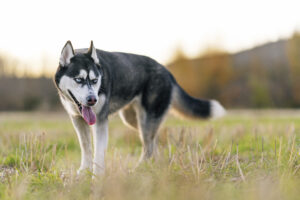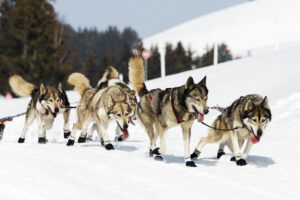Introduction: Understanding Canine Intelligence
When we talk about dumb breeds of dogs, it’s important to approach the topic with nuance and understanding. The concept of “intelligence” in dogs isn’t as straightforward as it might seem. Dogs that are labeled as dumb dog breeds may simply have different kinds of intelligence or learning styles that don’t align with traditional training methods. That said, some breeds consistently rank lower on standardized canine intelligence assessments, which typically measure trainability, problem-solving abilities, and obedience.
In this comprehensive guide, we’ll explore the top four dumb dog breeds based on intelligence rankings. We’ll delve into what makes these breeds challenging to train, why they might be considered among the least intelligent dog breeds, and how their unique traits actually make them lovable and special companions despite their ranking on intelligence scales.
Before we dive in, it’s worth noting that even dogs from breeds considered to be dumb dog breeds can be wonderful, loving pets. Their loyalty, affection, and other positive qualities often more than make up for any challenges in the training department. So if you own one of these dogs or are considering adopting one, remember that intelligence is just one small factor in what makes a dog a great companion.

How Dog Intelligence Is Measured
Before we rank the dumb dog breeds, let’s understand how canine intelligence is typically assessed. Dr. Stanley Coren, a renowned canine psychologist, conducted extensive research on dog intelligence and published his findings in his book “The Intelligence of Dogs.” His work is considered the gold standard when discussing dogs ranked by intelligence.
Coren’s assessment focused on two aspects of intelligence:
- Instinctive Intelligence: The skills a dog was bred for (herding, hunting, guarding)
- Adaptive Intelligence: How well a dog can solve problems and learn from its environment
- Working and Obedience Intelligence: How quickly a dog learns commands and obeys them
The third category is what most people refer to when discussing dumb dog breeds or least intelligent dog breeds. In Coren’s research, dog breeds were ranked based on:
- How many repetitions it took for the dog to learn a new command (fewer repetitions = higher intelligence)
- The success rate of obeying a known command on the first attempt (higher percentage = higher intelligence)
Dogs that required more than 100 repetitions to learn new commands and obeyed known commands less than 25% of the time were classified among the least obedient dog breeds or dogs with low IQ.
Now, let’s explore the top four dumb dog breeds according to these metrics.
The Top 4 Dumb Dog Breeds
1. Afghan Hound
The Afghan Hound consistently ranks as one of the dumb dog breeds in canine intelligence studies. With their flowing coats and regal appearance, these dogs were originally bred for hunting in the mountains of Afghanistan. Despite their low ranking in obedience and working intelligence, Afghan Hounds possess other remarkable qualities.
Why Afghan Hounds Are Considered Among the Dumb Dog Breeds:
- They typically require 80-100 repetitions to learn new commands
- They obey first commands less than 25% of the time
- They have a strong independent streak that often gets mistaken for stubbornness
- They’re easily distracted and have trouble focusing during training sessions
Afghan Hounds exemplify why the label “dumb dog breeds” can be misleading. While they may not excel at obedience training, they have exceptional instinctive intelligence. Their hunting abilities and decision-making skills in the field are remarkable. They’re simply independent thinkers rather than eager-to-please dogs.
Despite being among the least intelligent dog breeds in terms of trainability, Afghan Hounds are sensitive, affectionate, and loyal companions. Their aloof nature and independent thinking require an experienced dog owner who understands that these aren’t dogs that don’t listen but rather dogs that choose when to listen.
2. Basenji
The Basenji, often called the “barkless dog” due to its unique yodel-like sound, is another breed frequently listed among the dumb dog breeds. These ancient hunting dogs from Africa have a reputation for being one of the hardest dogs to train and among the dogs that are not smart by conventional measures.
Why Basenjis Are Considered Low Intelligence Dog Breeds:
- They can be stubborn and unresponsive to training
- They require 80-100 repetitions to learn new commands
- They have a success rate of less than 25% in obeying first commands
- They get bored easily during repetitive training sessions
- They have a strong prey drive that can make them seem distracted or untrainable
Basenjis aren’t actually unintelligent dog breeds—they’re highly intelligent in ways that don’t conform to standard obedience metrics. These dogs were bred to hunt independently, making split-second decisions without human direction. This independent thinking is often misinterpreted as being among the dogs with low IQ.
Basenjis are curious, energetic, and clean dogs that form strong bonds with their families. While they may rank among the least obedient dog breeds, they excel at problem-solving, especially when it comes to getting what they want (including escaping from enclosures!). Their intelligence simply manifests differently than in more biddable breeds.
3. Bulldog
The Bulldog (including English and American varieties) is often classified among the dumb dog breeds due to their slower learning pace and stubbornness. These stocky, wrinkled dogs with their distinctive pushed-in faces were originally bred for bull-baiting but have since become beloved companion animals.
Why Bulldogs Are Considered Among the Dumb Dog Breeds:

- They typically require 80-100 repetitions to learn new commands
- They obey first commands approximately 25% of the time
- Their stubbornness can make training sessions challenging
- They have a lower energy level, which can be mistaken for lack of intelligence
- Physical limitations (breathing difficulties) can impact their performance in training
Bulldogs exemplify why we should question labels like “stupid dog breeds.” Their physical structure and breathing difficulties impact their ability to perform certain tasks, which unfairly affects perceptions of their intelligence. Additionally, bulldogs were bred to be determined and somewhat stubborn—traits that served them well in their original purpose but make them appear to be among the least intelligent dog breeds in modern obedience tests.
Despite ranking low on lists of dogs ranked by intelligence, Bulldogs are emotionally intelligent, sensitive to their owners’ moods, and incredibly loving companions. They excel at providing affection and companionship, which are perhaps more valuable traits than rapid command learning for most pet owners.
4. Chow Chow
The Chow Chow, with its distinctive lion-like mane and blue-black tongue, rounds out our list of the top dumb dog breeds. These ancient Chinese dogs were bred for various purposes including hunting, herding, pulling, and protection. Their independent nature often lands them on lists of the least intelligent dog breeds.
Why Chow Chows Are Considered Low Intelligence Dog Breeds:
- They typically require 80-100 repetitions to learn new commands
- They obey first commands less than 25% of the time
- They have a stubborn, independent nature that resists traditional training
- They can be aloof and uninterested in pleasing their handlers
- They’re often described as “cat-like” in their independence
Chow Chows are another example of dogs that are bad at learning by conventional standards but possess other forms of intelligence. These dogs were bred to make independent decisions, not to constantly look to humans for direction. This makes them appear among the non-intelligent dog breeds when measured solely by obedience metrics.
Despite being categorized among the dumb dog breeds, Chow Chows are dignified, loyal, and protective companions. They form strong bonds with their families while maintaining their independent nature. Their intelligence is simply different—focused on self-sufficiency rather than eager obedience.
Beyond Intelligence: Other Considerations
When discussing dumb dog breeds, it’s essential to look beyond intelligence rankings. These dogs often excel in areas not measured by standard intelligence tests:
Emotional Intelligence
Many dogs from breeds considered dumb dog breeds have high emotional intelligence. They can:
- Form deep bonds with their owners
- Show empathy and comfort during times of distress
- Read human emotions effectively
- Provide consistent emotional support
For example, Bulldogs are known for their sensitivity to their owners’ emotional states, making them excellent companion animals despite ranking among the slowest learning dog breeds.
Independent Thinking
Dogs from supposedly dumb dog breeds often display remarkable independent thinking abilities:
- Problem-solving when motivation aligns with their interests
- Making decisions without human guidance
- Adapting to new situations on their own terms
- Finding creative solutions to get what they want
The Basenji, while listed among the unintelligent dog breeds on obedience scales, shows impressive problem-solving abilities when it comes to figuring out how to reach food or escape confinement—demonstrating that these aren’t truly dogs with low IQ but rather independent thinkers.
Special Skills
Many dogs from breeds considered dumb dog breeds have specialized skills:
- Afghan Hounds have exceptional sight and speed
- Bulldogs have remarkable determination
- Basenjis have keen hunting instincts
- Chow Chows have protective abilities
These specialized skills highlight why labeling these as stupid dog breeds is misleading and reductive.
Training Tips for Less Obedient Breeds
If you own one of these so-called dumb dog breeds or are considering adopting one, here are some training tips specifically tailored for breeds that may be challenging to train:
1. Find the Right Motivation
Dogs considered amongst the dumb dog breeds often lack the inherent desire to please that makes training easier in some breeds. Finding the right motivation is crucial:
- Experiment with different high-value treats
- Try toy rewards for play-motivated dogs
- Use life rewards (access to things they naturally want)
- Keep training sessions short and highly rewarding
For example, a Basenji might not work for a basic treat but might be motivated by the chance to chase a special toy after performing a command.
2. Be Consistent and Patient
When working with dogs categorized as dumb dog breeds:
- Accept that training will take longer
- Be absolutely consistent with commands and expectations
- Establish clear routines
- Celebrate small victories
- Never resort to punishment, which will backfire with independent breeds
Remember that these dogs may require those 80-100 repetitions mentioned in the intelligence studies. Patience is essential when working with what some consider the hardest dogs to train.
3. Use Positive Reinforcement
For dogs that don’t follow commands readily:
- Focus exclusively on positive reinforcement
- Reward even small steps toward the desired behavior
- Use clicker training for precise marking of correct responses
- Avoid aversive training methods, which will damage trust
Positive methods are particularly important for breeds like Chow Chows and Afghan Hounds, which may shut down or become more resistant with harsh training approaches.
4. Work With Their Natural Tendencies
Instead of fighting against the traits that make these dogs appear among the dumb dog breeds:
- Channel natural behaviors into appropriate outlets
- Create training scenarios that make sense to them
- Respect their independent nature
- Focus on essential commands for safety rather than trivial tricks
For instance, Basenjis have strong hunting instincts, so teaching a solid recall might require incorporating chase games in a controlled environment rather than expecting them to come just to please you.
5. Consider Professional Help
If you’re struggling with a dog from one of the supposedly dumb dog breeds:
- Consult a professional trainer experienced with independent breeds
- Look into training classes specifically for stubborn dogs
- Consider working with a certified animal behaviorist
- Join support groups for owners of similar breeds
Professional guidance can provide tailored strategies for working with breeds often classified among the least intelligent dog breeds.
Are These Dogs Right For You?
Before adopting a dog from one of these breeds often labeled as dumb dog breeds, consider whether their traits align with your lifestyle and expectations:
Good Matches for These Breeds:
- Experienced dog owners who understand breed differences
- People who appreciate independent pets
- Those who value loyalty and affection over trainability
- Owners with patience for extended training periods
- Families looking for unique personalities in their pets
Challenging Matches:
- First-time dog owners expecting easy training
- People who need a highly obedient service animal
- Families wanting a dog that will reliably perform tricks
- Owners without time for extended training
- Those who might take a dog’s independence personally
Just because these breeds appear on lists of dumb dog breeds doesn’t mean they’re not wonderful pets—they simply require owners who appreciate their unique qualities.
The Science Behind Canine Intelligence
Recent scientific studies have begun to challenge traditional notions of dog intelligence that lead to labels like dumb dog breeds. Research shows that:
- Different breeds have different cognitive strengths
- Problem-solving abilities don’t necessarily correlate with obedience
- Some breeds excel at social intelligence rather than working intelligence
- Brain structure varies significantly between breeds, affecting different types of intelligence
For example, a 2019 study in the Journal of Veterinary Behavior found that breeds with shorter snouts (like Bulldogs) process information differently than those with longer muzzles, potentially affecting their performance on certain intelligence tests.
This evolving understanding of canine cognition suggests we should be careful about labeling any breeds as dumb dog breeds, as intelligence comes in many forms.
Conclusion: Appreciating All Canine Intelligence Types
In conclusion, while certain breeds consistently rank lower on conventional canine intelligence scales, the label “dumb dog breeds” is an oversimplification that fails to capture the complexity of dog cognition. The Afghan Hound, Basenji, Bulldog, and Chow Chow may require more repetitions to learn commands and obey at lower rates, but they possess other valuable traits and forms of intelligence.
Rather than dismissing these breeds as dumb dog breeds or least intelligent dog breeds, we should appreciate them for their unique qualities:
- Their independent thinking and problem-solving abilities
- Their specialized skills and instincts
- Their emotional intelligence and loyalty
- Their distinctive personalities and characteristics
Every dog, regardless of breed or intelligence ranking, has something special to offer as a companion. What matters most is finding a dog whose temperament, needs, and abilities match your lifestyle and expectations.
If you’re considering adopting a dog from one of these breeds often labeled as having low intelligence, don’t be discouraged by their ranking. With patience, understanding, and appropriate training approaches, these dogs can be wonderful, loving companions who bring joy and unique character to your home.
Remember that a dog’s worth isn’t measured by how quickly it learns commands or how reliably it performs tricks. Sometimes, the most rewarding relationships come from understanding and appreciating animals for exactly who they are—even if they rank among what some might call the dumb dog breeds.
FAQs About Dog Intelligence
Are dumb dog breeds actually unintelligent?
No, dogs labeled as dumb dog breeds aren’t truly unintelligent. They simply score lower on specific measures of working and obedience intelligence. Many have high levels of adaptive intelligence, problem-solving abilities, and emotional intelligence that aren’t captured by traditional intelligence rankings.
Do dogs considered to be dumb dog breeds make good pets?
Absolutely! Many dogs from breeds considered to be dumb dog breeds make excellent companions. They’re often loyal, affectionate, and have unique personalities that endear them to their owners. Their training challenges can be managed with the right approach and expectations.
What are the smartest dog breeds?
According to Dr. Stanley Coren’s research, the top intelligent dog breeds include Border Collies, Poodles, German Shepherds, Golden Retrievers, and Doberman Pinschers. These breeds typically learn new commands in fewer than 5 repetitions and obey first commands at least 95% of the time.
How can I help my dog from a “less intelligent” breed learn more effectively?
Focus on finding the right motivation, keeping training sessions short and engaging, using positive reinforcement, being patient and consistent, and working with rather than against your dog’s natural tendencies. Consider professional help if needed.
Does a dog’s intelligence affect its ability to be a good family pet?
No, a dog’s ranking on intelligence scales has little correlation with its ability to be a loving, loyal family companion. Many dogs from breeds considered to be dumb dog breeds form strong bonds with their families and exhibit excellent social behaviors that make them wonderful pets.
Can dogs from less intelligent breeds ever learn complex commands?
Yes! While it may take more repetitions and consistency, most dogs from breeds labeled as dumb dog breeds can learn and perform complex commands. The key is finding training methods that work for their specific learning style and providing proper motivation.
For more information about various dog breeds and their care, visit our other helpful resources at PetsPump. Our site offers comprehensive guides on dog training techniques, breed-specific care, and solutions for common behavioral challenges.
Sources:
- Coren, S. (2006). The Intelligence of Dogs. Free Press.
- American Kennel Club. (2023). “Breed Temperament Guide.” Retrieved from www.akc.org
- Horschler, D.J., et al. (2019). “Absolute brain size predicts dog breed differences in executive function.” Animal Cognition, 22(2), 187-198.
- Hecht, J., & Horowitz, A. (2021). “Seeing Dogs: Human Preferences for Dog Physical Attributes.” Anthrozoös, 34(2), 177-191.
- Udell, M.A.R., & Wynne, C.D.L. (2008). “A Review of Domestic Dogs’ (Canis Familiaris) Human-Like Behaviors: Or Why Behavior Analysts Should Stop Worrying and Love Their Dogs.” Journal of the Experimental Analysis of Behavior, 89(2), 247-261.






